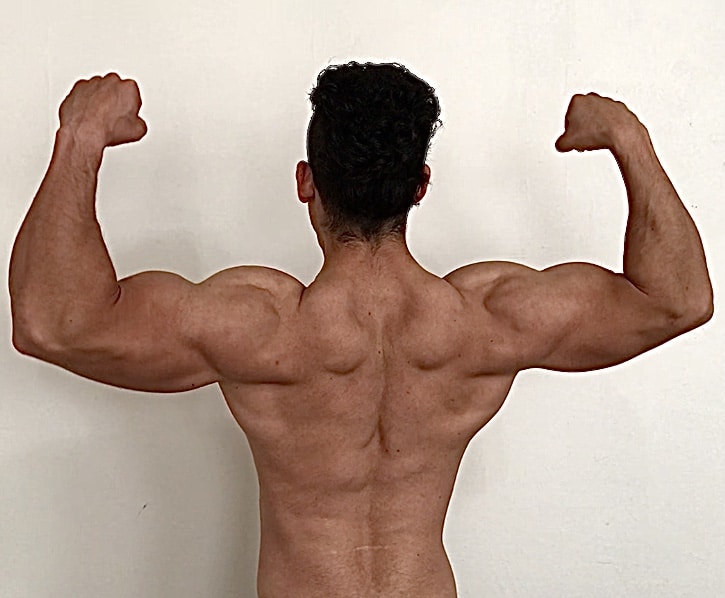
Dieting is a necessary task for anyone looking to achieve maximal fat loss. Even though cardio is a tool that can be used, reducing calories is the more efficient manner of losing fat in the long run.
Dieting is uncomfortable; your body will fight against you and regulate hormones like ghrelin and leptin that make you want to eat more. It’s a physical and mental battle that takes a great deal of self discipline.
If it were up to anyone, they would likely want to make the dieting phase as short as possible. Most people can deal with a little extra discomfort if it means getting the job done more quickly.
However, many experts advise against aggressive dieting, with the rationale being that you are more likely to lose muscle in the process. Unfortunately, this rationale has been misconstrued.
Some studies show a reduction in lean body mass after an aggressive dieting period. It’s important to note that lean body mass does not necessarily equate to muscle.
Yes, muscle is a part of lean body mass. But so is bone, organs, ligaments, tendons, and most importantly water. Water is a huge component of lean body mass.
There is a reason you are told not to drink water before weighing yourself or getting a body fat scan. It can cause a drastic change in the results of the test.
Muscles are 76% water, with the rest being made up of proteins, glycogen, and intramuscular triglycerides (fats). The muscle tissue itself is a collection of many proteins.
When dieting, you may notice that your muscles appear flat or smaller looking. It may even be more difficult to get a pump in the gym. But this is not due to actual muscle tissue loss; it’s due to a reduction of water and glycogen in the muscle itself.
Muscle tissue is dense and muscle proteins aren’t a favorable energy source, even in dieting periods. In other words, muscle just doesn’t disappear.
The simplest illustration of this is in bodybuilding. This applies to both natural and enhanced lifters, just at different scales.
Bodybuilders will diet to incredibly low body fat percentages, lower than the average person would ever achieve or possibly even want to achieve. In the process their workouts will suffer and they will experience that flat look coupled with a lack of energy.
But during the peak week of the show they begin to load up on carbohydrates, sodium, and water and suddenly their physique transforms. If everything goes properly they will be able to maintain that same level of leanness and their muscles will pop as they once did pre contest.
Perhaps they lose a tiny bit of muscle during the dieting phase, but the actual amount is insignificant. Keep in mind that competitive bodybuilding is the most aggressive form of dieting. Now imagine the potential muscle loss with an aggressive, yet reasonable diet. It’s almost nothing.
The best analogy to describe muscle tissue is that of a balloon. You can inflate and deflate the balloon and change its shape, but the actual structure doesn’t change. The only thing that changed is the contents inside. Just because you temporary deflate muscle doesn’t mean it can’t be inflated at a later time.
With an aggressive fat loss diet you can expect to lose upwards of 1% of your body weight each week. It is better to use percentages rather than absolute figures since the percentage will automatically adjust to new body weight measurements.
Maximum Calorie Deficit Without Losing Muscle
By structuring the diet properly, you can eat in a significant calorie deficit while mitigating muscle loss.
You can diet on 60% of your TDEE calories without major muscle loss.
TDEE stands for total daily energy expenditure, which is an estimate of the number of calories burned each day given a person’s weight, body fat percentage, age, and activity level. It is also known as maintenance calories.
A google search for TDEE calculator will result in many quality results. The best thing to do is to put your information in multiple calculators and take the average; as each one has a different equation to calculate TDEE.
Take the number and multiply by .60 to find your aggressive dieting daily calorie intake.
Dieting on an aggressive calorie deficit goes beyond eating low calories however. Macronutrients have to be taken into consideration to prevent muscle loss.

Protein is the most important macronutrient for maintaining muscle. Protein is the only macronutrient that can build and repair muscle, which makes it irreplaceable. There is no mechanism in the body which can turn carbohydrates or fats into protein, since protein contains nitrogen while the other two don’t.
The standard for protein intake in active men and women is 1 gram per pound of lean body mass. For simplicity, you can consume 1 gram per pound of body weight unless you are obese, at which point protein intakes that high would be unnecessary.
Contrary to popular belief, you don’t really have to increase protein intake on a diet. Some people choose to go from 1 to 1.2 or from 1 to 1.5, but 1 gram per pound should be enough to maintain muscle.
A study in healthy, resistance trained athletes showed that higher protein intake reduced lean body mass loss when dieting.
Some people increase protein on a diet because protein is considered to be the most satiating macronutrient, meaning it fills you up and curbs appetite.
Carbohydrates and fats both act as energy sources in the body, and are more interchangeable than people realize. Fats deserve slightly more consideration, as you don’t want fat intake to be consistently low due to its ability to regulate hormones.
At minimum, fat intake should be 0.3 grams per pound of body weight on a diet.
Beyond that 0.3 gram per pound of body weight threshold, there is a great deal of freedom to how you can divvy up carbohydrates and fats. It should be based on personal preference for taste, digestibility, and satiation.
How to Maintain Muscle on a Diet
The two biggest factors that determine how much muscle you are able to retain in an aggressive cutting phase are protein intake and resistance training.
Protein intake has already been discussed and is pretty straight forward. But people sometimes overlook resistance training and make sweeping changes to their workout routine when it is not needed.
The worst thing you could do when trying to maintain muscle is substitute resistance training workouts for cardio. It’s fine to add cardio to your routine, but never at the expense of weight training.
The stimulus of weight training is crucial for maintaining muscle on a diet. Quite frankly, with a calorie deficit this great, you shouldn’t need much additional cardio anyway.
Within a resistance training program, another mistake people make is to stop training heavy. They opt for higher reps in an effort to burn more calories. This change is futile if not detrimental for your physique when dieting.
For one, strength is a good indication of muscle retention on a diet. It’s unreasonable to think you will be as strong as you would be with normal calories, but if you are able to maintain most of your strength then odds are you haven’t loss much muscle.
Secondly, people who resistance train greatly underestimate how much they can do with higher reps. Say for example someone can curl a 100lb barbell for 10 reps. If they are aiming for 20 reps, they would likely drop it to 50lbs. The rationale being; double the reps so use half the weight.
But strength isn’t always linear in that way. In reality, they could probably curl 70lbs for those 20 reps. In the end, they sell themselves short due to this high rep protocol. Continuing to lift heavy is an easy way to ensure workout intensity is high and muscles are optimally stimulated.
Sleep is a major component of muscle retention on a diet. Studies have shown massive changes in the proportion of fat loss to muscle loss in people who are sleep deprived vs. people who aren’t. In fact, a single night of sleep deprivation was shown to have negative impacts on muscle protein synthesis, testosterone, and cortisol.
